Comment: The following are excerpts from Colonel Cassad's analysis. For the full report, see the original here (and a PDF version here).
Because since the first day after the moment of the crash of the Malaysian "Boeing" I adhere to the version where the airplane was shot down by the Ukrainian SU-25 attack jet, I simply cannot refrain from publishing a new investigation, which summarizes the arguments on this topic.
A rod from the "air-to-air" missile R-60M was found among the wreckage of MH17
A model was assembled in Holland using of the fragments of the "Boeing" that was shot down in Donetsk. Using the photos of the fragments from the crash site, it is possible to approximately reconstruct the airframe. Among the photos there were at least two that refute the version of the attack against the plane using the "BUK" complex.
On one of the photos we can see the object, which looks like a rod from the AAM missile R-60M. On the other photo — a round hole in the air intake of the right engine. There are at least nine holes in the skin that are characteristic of the effect of an "air-to-air" missile.
As we zoom in the photos, we can see a huge number of small marks-"pockmarks" and black patches of soot on the external side of the cabin, and also the edges of the external skin that are bent inside. This suggests that the warhead exploded in close vicinity from the plane's skin. By some estimates, the distance between the pilot cabin and the epicenter of the explosion could be between 50 cm to 4-5m. At the same time the radius of the impact zone of the "BUK" is 17 m, the missile explodes above and ahead of the target, making a climb, and creates a large cloud made of six thousand of shards. (source).
How "BUK" fires
If this type of the "ground-to-air" missile was used to attack the "Boeing", then the majority of the shrapnel holes would leave characteristic rectangular-shaped traces (the I-shaped fragments have better penetration force capabilities than the cubes).
On the skin of the discovered fragments of the "Boeing" there is not a single hole of this size.
Rod-shaped holes. One of the rods was found
Here is a description of the R-60M warhead (the 62M model). The rods used in it are a bit different from the classical thin elongated sagittal rods. In the export variant a set of "pseudo-rods" is used. These sub-projectiles are made of wolfram, which is heavier than steel. "The overlapping sub-projectiles made of wolfram, which is twice heavier than alloy steel. The cut the power wing set, airframes, and engines," — says the description of the R-60M warhead.
"The rod-shaped warhead of R-60M (62М) with wolfram rods laid out perpendicularly would result not in linear but rather in huge delta and diamond-shaped holes.
Only R-62 and, starting from the 80s, R-62M were exported. 70% of both missiles had a shrapnel (or "pseudo-rod based") rather than rod-based warhead.
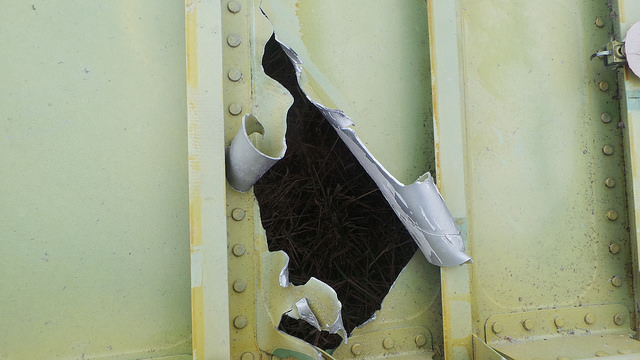
HOW THE MH17 "BOEING" WAS SHOT DOWN
Just seven seconds passed after the moment of the last response by the MH17 crew until the loss of the connection with the airplane. The crew didn't have enough time to tell the dispatchers about any threatening situation (if we believe the authenticity of the "missing" records from the air traffic control office in Dnepropetrovsk). So, the events in the pilot cabin unfolded rapidly.
After the impact the "Boeing" was turned around, it sharply lost airspeed — from 900 km/h down to 400 km/h and later it planned from the height of 10 thousand meters down to the height of about 2 thousand meters. The residents of Grabovo and Torez heard two very loud bangs in the sky. After going below the clouds, the "Boeing" started to disintegrate — a large piece of the fuselage landed in a forest plantation the closest to the original place where the plane was hit. This was a part of business-class and of the second compartment of the economy-class. They were found in Petropavlovka. Next to it, in Rassypnoye they found the separated pilot cabin and the bodies of 40 more people. The tail and the central part of the fuselage, along with the landing gear and the wings flew the farthest — in the field of the Grabovo village.
Between July 2014 and February 2015 the majority of the Boeing pieces were found. The right wing and the right side of the business-class, and also the nose of the "Boing" are missing. Up until now three passengers of the plane are not identified. Overall, there were 298 people onboard. Metallic fragments were found in the body of the pilot, according to the Malaysian press. Overall, 25 metallic objects that triggered investigators' suspicion were found.
The left side of the cabin, the skin of floor of the cabin received the most damage from the shrapnel elements. Numerous holes are visible in the area of the crew commander chair, several holes — in the chair of the second pilot. At least four holes are visible in the body of the crew commander. All of these holes have round shape.
Considering the remains of the soot and a large number of small black dots — the traces of impact by the detonation products, the missile charge was engaged in exactly this area — outside the pilot cabin at close range.
Considering the height of this flight - 10 thousand meters, the cabin could be reached either by a SAM complex (S-300, "BUK") or by an "air-to-air" missile.
And because there are no traces of the impact of rod-shaped sub-projectiles in the pilot cabin, but there are many holes with jagged edges — it was a fragmentation charge that exploded there. Such shells with round contact elements are used in the GSh-30 aircraft cannons, they are also characteristic for the S-200 and S-300 SAMs.
Because there are no cross-shaped traces — the dominating sub-projectiles of the BUK missile, and because the actual explosion occurred at the distance of no more than 5 m, we may reject the version of the use of BUK. The S-200 complexes are "not used" in the Ukraine since 2001, nobody recorded a launch of S-300 missiles in this area.
ATTACK ON THE BOEING FROM THE RIGHT, "IN PURSUIT"
Thus, the version of one or two Su-25M1 attack jets arose. These are modernized attack jets, which are present in Ukraine (by the moment of the tragedy, the Ukrainian air force had five such jets — one of the six Ukrainian Su-25M1 was shot down one day before the "Boeing" catastrophe).
Besides the object found among the wreckage, which is similar to the rod-shaped sub-projectile of the R-60M missile, this version is confirmed by the fragment of the air intake of the right engine of the "Boeing".
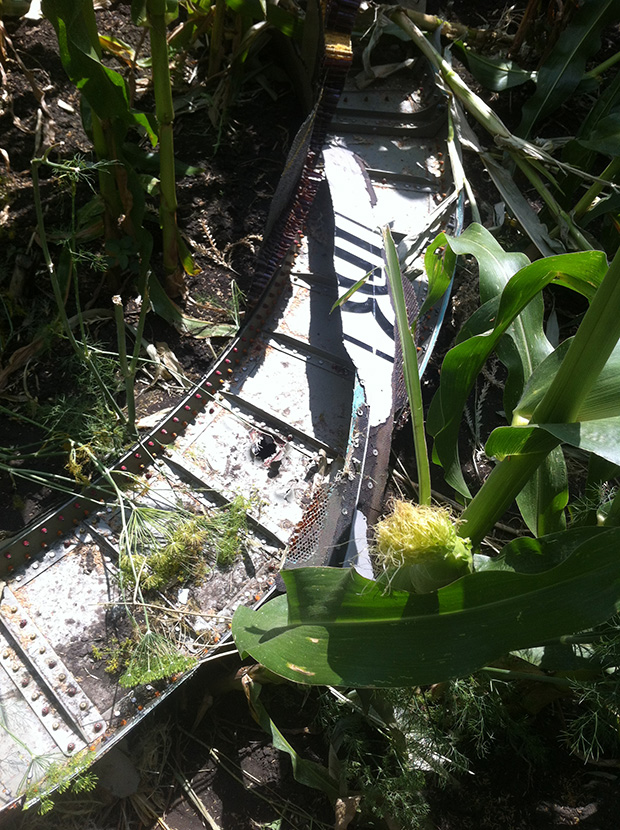
There is another piece of the engine — the rim of the turbine with the traces of the inbound holes, however it is impossible to determine which of the engines it belongs to. It is known that this fragment was found in the outskirts of Petropavlovka, where the right air intake was located. However, the left door was found here as well, which is located in front of the left engine.
If this is indeed a fragment of the right engine, then the fire was performed using an aircraft cannon from the right and the back and later from the right side through the broadside and the right engine towards the pilot cabin. Most likely fire was opened at close range (about 500-700m).
Here is how the first attack using the aircraft cannon from the right and the back "in pursuit" — the bullets penetrate the engine skin, the right side of the business-class and hit the pilots in the back. This version is considered in more detail here.
Either the aircraft cannon GSh-30 with armor-piercing or fragmentation ammunition (see above) with the caliber of 30 mm or the four cannons GSh-23 with the ammunition of 23 mm caliber could be used for shooting. Several holes on the discovered piece of skin of the pilot cabin and also the back of seat of the second pilot were most likely damaged by the shrapnel no bigger than 20-30mm, which flew from the side of the tail. This is suggested by several sources at once (link and another link ).
The pilots didn't see the attack jet in front of them — they were mortally wounded from the back. Already after this the Su-25 attacked the cabin from the front, when the "Boeing" was turned around. This is how the numerous entry and several exit holes on the cockpit plating were formed.
CONCLUSION
A combined strike from a Su-25 M1 attack jet was performed against the Malaysian Boeing. The first attack from the Su-25M1 was performed on the course of the "Boeing" flight in pursuit — most likely the attack jet was located on the right side of the tail of the Malaysian airplane and fired while moving towards the right engine — in this direction the jet made several shots using its 23 mm or 30 mm aircraft cannon.
The pilots died after the first attack, a large-scale decompression occurred in the cabin, the electronics went out of order, the plane turned right and the "Boeing" was probably attacked by the attack jet again, but this time on the left side, in the cabin area from the side of the crew commander using the aircraft cannon and a R-60M rocket in the area of the left engine and the left door, on which the traces of penetration by rod-shaped sub-projectiles remained.
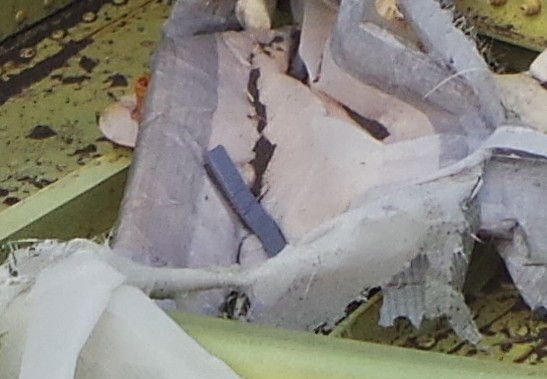
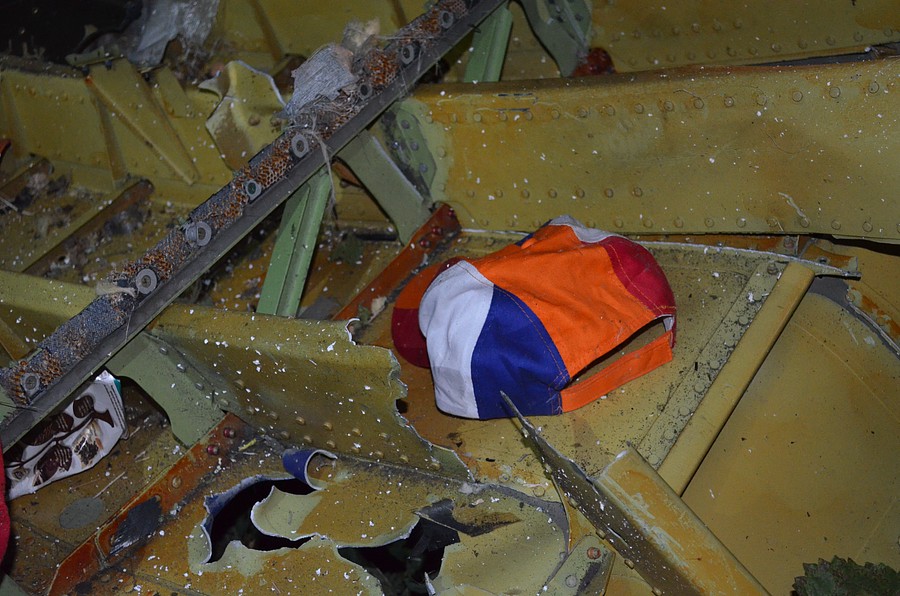
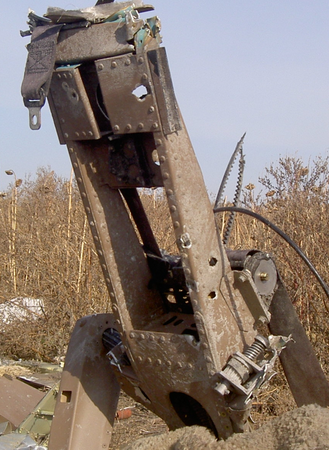
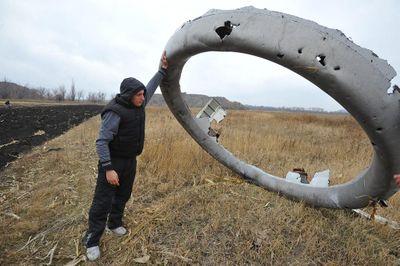
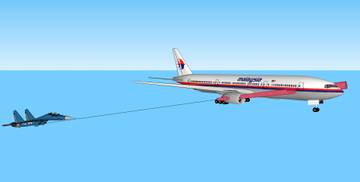



Reader Comments
to our Newsletter